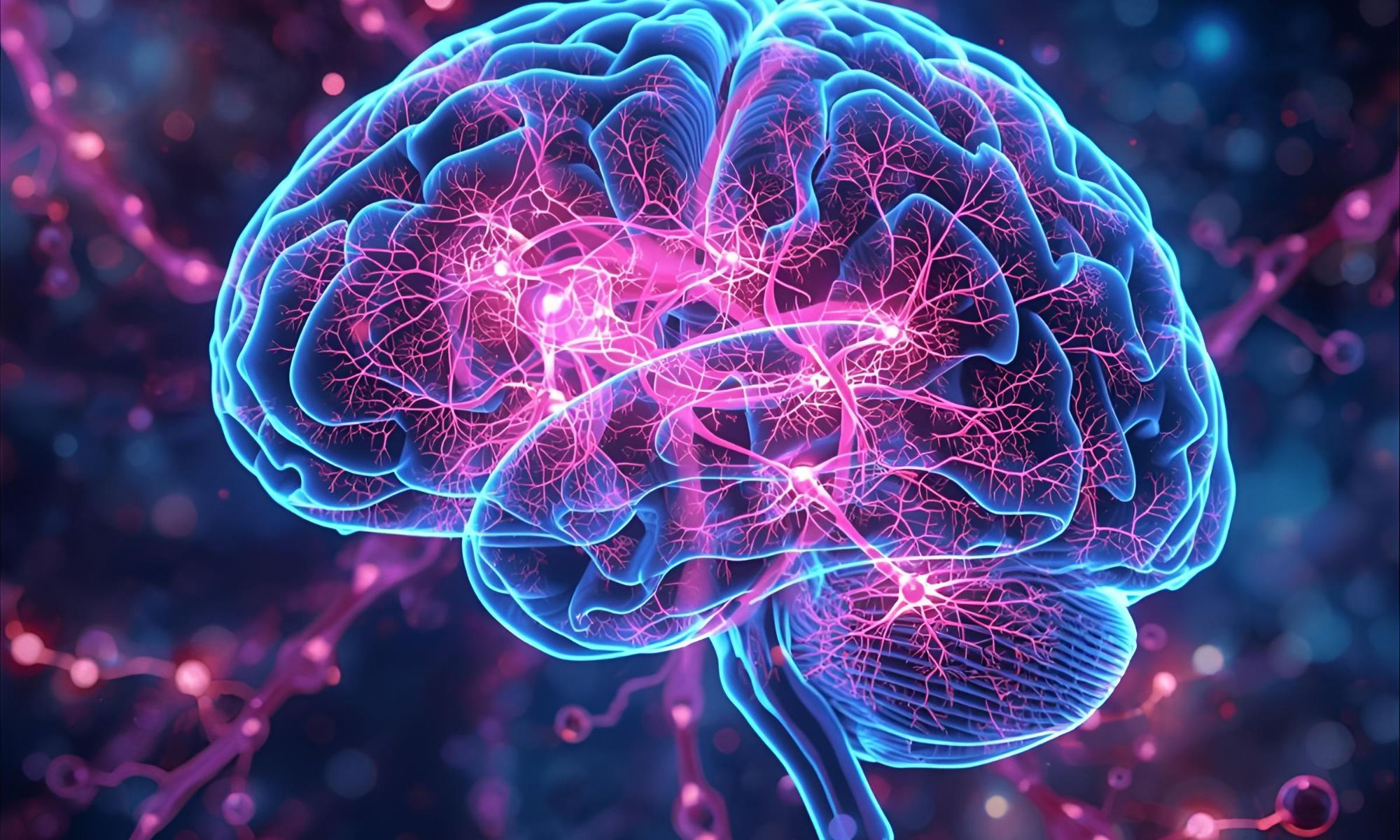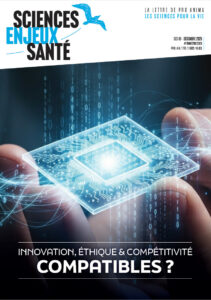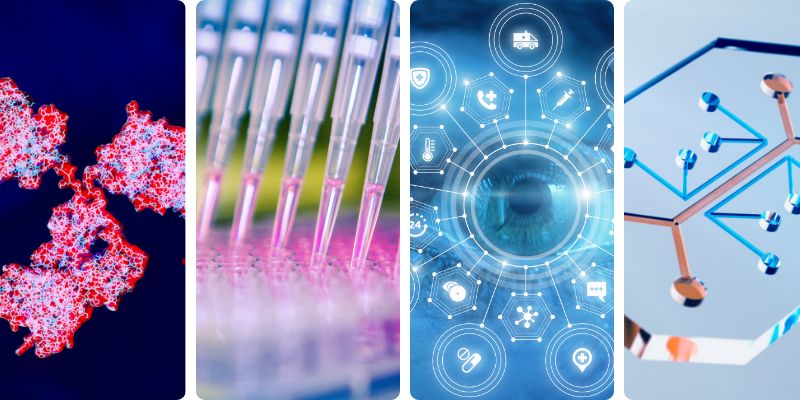
News on non-animal methods
SEPT. 15 - 19 2025
NEWS, REPORTS & POSITION STATEMENTS
1. Urgent relaunch of the AFNOR S96R commission: F3OCI collective appeal
The French organoid and organ-on-a-chip industry (F3OCI), alongside academic, industrial and biobank infrastructure players, published an open letter calling for the AFNOR S96R commission to be reactivated. This commission, now dormant, carried France’s voice within the international committee ISO/TC 276, where strategic standards for biotechnologies (biobanks, organoids, organs-on-a-chip) are defined.
The mothballing of the S96R deprives France of official representation in international standardisation discussions, at a time when the standards that will structure tomorrow’s scientific and industrial exchanges are taking shape. Standardisation is a key lever for competitiveness and influence: participating in the definition of standards means shaping global practices and strengthening the position of French players in value chains.
Read more (FR)
2. Make America Healthy Again (MAHA) Strategy: federal plan to address childhood chronic disease
On September 9, 2025, the White House released the Make America Healthy Again (MAHA) Strategy — a comprehensive federal plan to address childhood chronic disease. Among its most forward-looking initiatives is the FDA’s formal commitment to New Approach Methodologies (NAMs).
This marks a transformative shift for innovation in OTC (over-the-counter) drugs and sunscreens, where outdated testing models have long hindered progress and innovation. By embracing NAMs, the FDA is enabling faster, more predictive, and human-relevant pathways for product development — opening the door to safer, more effective consumer public health solutions.
3. Psychedelics meet human brain organoids
Alzheimer’s disease (AD) is characterized by a long preclinical phase lasting more than a decade before the onset of its clinical phase of mild cognitive impairment (MCI) or dementia. Recent advances in psychedelic research underscore numerous neuroplastogenic and anti-inflammatory alterations induced by these compounds, making them promising therapeutic candidates for AD.
In a mini review, the authors briefly summarize the existing literature using human cerebral organoids to study the molecular and metabolic changes caused by various psychedelic compounds, focusing on their potential therapeutic applications for AD.
Read the review in Frontiers in Dementia
4. FBS: how to leave it behind in the pursuit of more reliable science
Even though fetal bovine serum (FBS) is nearly ubiquitous in use for supporting cell growth in vitro, there are major reproducibility, safety, and animal welfare issues. Fortunately, numerous FBS replacements have been validated and are publicly or commercially available.
In a new review, successful serum-free, animal-component-free, and chemically defined media applications are highlighted for the cultivation of stem cells and organoids, the development of organ-on-a-chip systems, the bioprinting of tissues, and many more applications. Moreover, the review discusses novel avenues to address the scientific and practical hurdles that might limit a full transition from FBS to fully defined cell culture media and offers a brief perspective on potential future directions.
Read the review in Frontiers in Toxicology
INTERVIEWS, NOMINATIONS & AWARDS
5. The ENVOL Project is the winner of the “Idemo AURA, France 2030” call
The ICARE group received 1 977 000 € to support the ENVOL project’s — the marketing of a unique 3D skin model combined with a digital signature in a microfluidic system. The model will allow the screening of molecules for cosmetics, dermo-cosmetics and pharmaceuticals and for sensitisation tests for medical devices and chemical products.
ICARE, a pharmaceutical and veterinary company founded in 1995 by Dr Poinsot, is a European leader in the control of health product safety, enabling the marketing of chemical products, medical devices and veterinary products to be authorised from both a microbiological and biocompatibility point of view, in line with regulatory requirements.
Read more(FR)
6. ARDF Annual Grant Awardees
Alternatives Research and Development Foundation (ARDF)‘s Annual Open grant program was established to fund research projects that develop alternative methods to advance science and replace or reduce animal use. Proposals are welcome from any nonprofit, nongovernmental educational or research institution worldwide, although there is a preference for U.S. Since 1993, ARDF has provided over $5.3 million in funds for projects in 34 states and 9 countries.
Discover the 2025 grant awardees and their human-focused projects.
TOOLS, PLATFORMS, CALLS
7. Humane Research Fellowships
The Humane Research Trust is a registered charity in the UK. Humane Research Fellowships are designed to support early career researchers to develop their career whilst using animal-free techniques to advance human health.
Humane Research Fellowships are suitable for applicants who are pioneering research methods to replace the use of animals and animal-derived biomaterials in their research of human diseases. The duration of the Fellowship award is up to 5 years, and applicants can apply for up to £450,000. Stage 1 closing date: 21 December 2025.
INDUSTRY, BIOTECH & PARTNERSHIPS
8. ToxTracker® Approved by OECD for Incorporation into Test Guideline Programme
Toxys, a leading innovator in animal-free toxicology solutions, announces that its flagship product, ToxTracker®, has been accepted into the Organization for Economic Co-operation and Development (OECD) Test Guidelines Programme.
The original approval by OECD to start the development of this Test Guideline followed an extensive multi-year international inter-laboratory validation. The OECD has now published the draft ToxTracker Test Guideline for public consultation. Full OECD approval is expected to unlock widespread regulatory acceptance across many industries and regulatory bodies and allow users to include genotoxicity data from ToxTracker into regulatory submissions.
9. EPA NAMs Training
The U.S. EPA has been developing and sharing online NAMs training for chemical risk assessment, including httK R package for evaluating the kinetic behavior of chemicals.
This catalog of NAMs training materials is freely available on the epa.gov website.
SCIENTIFIC DISCOVERIES & PROTOCOLS
10. Generation of hIPSCs from patients with PHACE syndrome
PHACE syndrome (Posterior fossa anomalies, Hemangiomas, Arterial anomalies, Cardiac defects, and Eye anomalies) represents a series of multisystem structural birth defects associated with a benign infantile hemangioma. This rare disease presents a variety of symptoms, and its genetic etiology remains unknown.
In a new study, scientists isolated peripheral mononuclear blood cells (PBMCs) from three patients with PHACE syndrome and generated induced pluripotent stem cell (iPSC) lines using Sendai virus reprogramming. Each line exhibits normal iPSC morphology, high expression of pluripotency factor genes, and trilineage differentiation capability. These lines are valuable for modeling PHACE syndrome in vitro to explore the disease mechanism and screen for potential therapeutics.
Read the publication in Stem Cell Research
11. Human neural organoid MPS show the building blocks necessary for basic learning and memory
Brain Microphysiological Systems (MPS), including neural organoids derived from human induced pluripotent stem cells, offer a unique lens to study the intricate workings of the human brain.
A new study, co-authored by CAAT members, investigates the foundational elements of learning and memory in neural organoids. Neural organoids showed synapse formation, glutamatergic and GABAergic receptor expression, and other functions necessary for basic learning and memory, demonstrating their potential as tools for studying neurophysiological and neurological processes and informing therapeutic strategies for diseases.
Read the publication in Nature communications biology
12. Dev Tox of microplastics in human stem cells using AOP-based integrated approaches
Micro/Nanoplastics (MNPs), detected in human tissues including the placenta, raise significant concerns regarding their potential impact on early human development. However, the mechanisms underlying their developmental toxicity remain poorly understood.
To address this, researchers applied an Integrated Approaches to Testing and Assessment (IATA) framework to evaluate the developmental toxicity of polystyrene (PS) MNPs by combining adverse outcome pathway (AOP) development, experimental testing within an Integrated Testing Strategy (ITS), and literature-based data integration.
Read the publication in Toxicology
WORTH (RE)SHARING
RE-Place Educational Webinars : Oct. 16 : “Modeling Human Diseases In Vitro using Advanced Microphysiological Systems”. Link to register
Meet Chip, NCATS interactive infographic to explore Tissue Chips developed by the NIH


